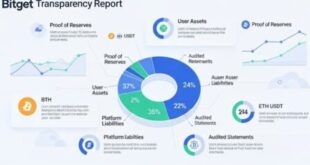India – 19 February 2025: A recent report by Vector Consulting Group exposes a critical issue in India’s pharmaceutical distribution: even the leading pharma companies have significant gaps in brand availability at chemists.
The study, which surveyed over 900 chemists and 68 stockists across 18 cities, reveals that the coverage of pharmaceutical company brands at chemists is only 60% to 85%, despite these companies maintaining high inventory levels — averaging 15 weeks in the supply chain and 7 weeks with distributors. This shortfall leads to the unavailability of prescribed brands at chemists in 10% to 60% of cases, varying by region.
“Companies are relying on the assumption that having large quantities of stock and working with the bigger stockists in the country ensures availability, but the reality is far different,” says Chandrachur Datta, Partner, Vector Consulting Group. The price they pay is product obsolescence, expirations, and an annual inventory write-off averaging 4% to 10%.
The report reveals that chemists, whether sourcing medicines from wholesale markets or distribution-focused stockists, typically work with a limited number of stockists. These stockists usually concentrate on specific therapeutic areas from each company rather than carrying the full product range of a company across therapeutic areas. Moreover, stockists serve a limited number of chemists—either those who visit them in wholesale markets or those they selectively choose to service in distribution-focused setups, guided by logistical challenges and credit risk considerations.
By design, this approach creates gaps in the availability of pharmaceutical brands at chemists, as their access is limited to the subset of brands chosen by their selected stockists. Additionally, since stockists do not service all chemists in their area, even when a pharmaceutical company supplies its products to multiple stockists, no single chemist is likely to have full access to all the brands from that company.
Datta noted, “India’s pharmaceutical market is growing rapidly, yet the backbone of its distribution remains fragmented. Companies are losing significant revenue and market opportunities because their brands are not consistently available where and when they are needed.”
“This is not just a business challenge; it’s a missed opportunity to enhance healthcare in the country,” added Datta. “Pharma companies need to rethink their approach by adopting smarter, more agile, consumption-based restocking systems to ensure better stock availability and prescription fulfilment. By unlocking the untapped potential of their distribution networks, they can resolve these issues and drive sustainable growth.”
The findings underline a pressing need for change in India’s pharmaceutical sector. Solutions outlined promise more than better profits; it promises a far more reliable healthcare experience for millions of Indians.
 Newspatrolling.com News cum Content Syndication Portal Online
Newspatrolling.com News cum Content Syndication Portal Online







